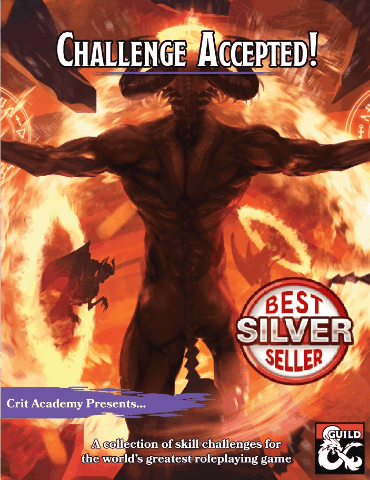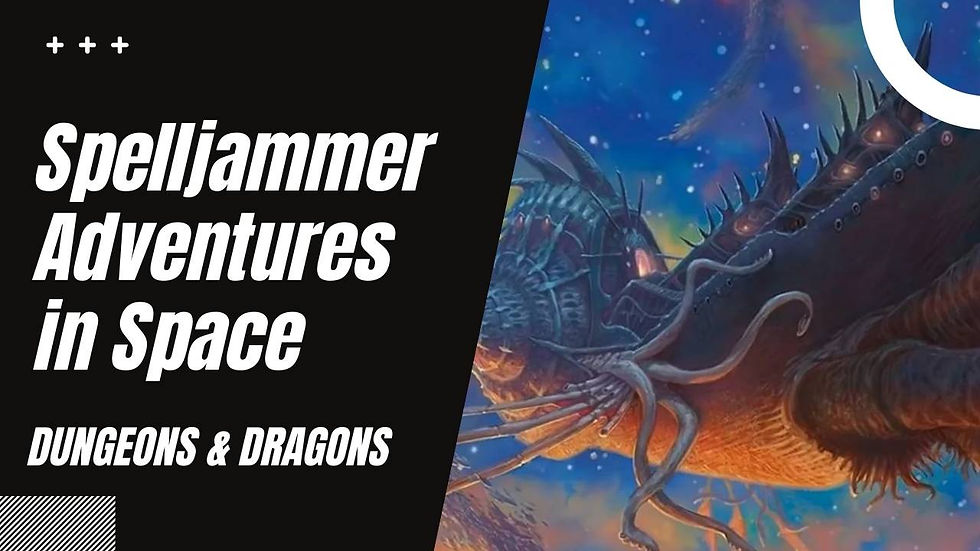D&D: Dynamic Combat with Called Shots! Go for the Eyes!
- Justin Handlin

- May 19, 2022
- 7 min read

Ever cripple a dragon's wing? Destroyed a beholder's central eye? Smashed a bone devil's stinger?
How would your players react to learning they can overcome precise targeting and damage thresholds to inhibit a creature mid-battle?
Dynamic Combat Encounters
As Dungeon Masters in Dungeons and Dragons, we are always looking for ways to improve, enhance, and engage in tactical combat in the game. Nobody likes the traditional trading blow for blow. Players want combat that alters and changes with every round. Players want to be surprised, they want to be able to use their character's knowledge to gain an advantage. All of these mechanics play into building dynamic combat encounters while allowing us to delve into a bit of lore and exploration as well.
The mundane hit point mechanics in Dungeons & Dragons, and by extension, many tabletop games have always left something to be desired. Every player at one time or another has asked “Can I stab the beholder in its big eye to blind it?” or “If I kick the dragon in its throat will it still be able to use its breath weapon?” Under normal circumstances, this request is answered with a simple “No.” Other times, a DM may decide to grant some sort of bonus, a ruling they decide on the fly. Whatever the case, D&D doesn’t really lend itself well to Called Shots. An action where the player wants their character to hit a specific part of a monster’s body, hoping for a special outcome beyond what the mechanic can provide.
What if there was a mechanic for D&D Fifth Edition that allowed for this? Not only for called shots but also as a tool to allow character knowledge to reveal special weaknesses for the characters to exploit? What if there was a set of rules that allowed your player characters to Go for the Eyes!?
Called Shots in Dungeons & Dragons: Go for the Eyes!
Well, let's talk about rules that do just that. Not only do these rules allow for called shots, but they are designed in such a way that there is a dynamic tradeoff or drawback to disabling or destroying a particular part of a creature. Not only does this add a chaotic and dynamic feeling to the fights, but adds new elements to surprise the characters, letting them feel powerful and tactful, while still maintaining the creature’s general threat level.
One of the best things about Go for the Eyes is that the author, Alex Clippinger could have just generalized traits for certain types of monsters. But in order to really make each monster battle dynamic, he chose to focus on features that made a monster unique. This grants each unique monster, unique new traits and targets for the characters to focus on. Beyond that, the details include guiding the DM on offering up character knowledge allowing backstories, special skills, or other lore and knowledge-focused features to shine. Even if it is as simple as an investigation at a library by the characters.
Save time and effort by jumping into the game with already fleshed out locations, encounters, maps, abilities, and stat blocks. Being a DM is hard. Why not let us do the heavy lifting so you can have a great time at the table.
Go for the Eyes includes a wonderful suggestion on creating your own checks for monster knowledge. Along with guidelines for setting DCs. I’ve found this a powerful tool.
Arcana is used to recall information about aberrations, planar creatures, and creatures created by magic (such as golems)
Nature is used to recall information about worldly beasts and monstrosities.
Religion is used to recall information about celestials, fiends, and undead.
There is usually overlap between multiple subjects: fiends are summoned and studied in magic (Arcana) and are important to the faiths (Religion).
History can arguably be used in place of Arcana, Nature, or Religion in almost any case.
There are several special rules clarifications for the DM to consider, but these are minor and maybe more obvious to veteran players. The inclusion of Thresholds was an excellent decision. A threshold for targeting a specific area to damage or destroy means that the attacker must do a minimum amount of damage to affect the targeted location. This is excellent, as it means that not every attack will affect the targeted location. This may require the characters to adjust tactics accordingly when they realize that the wizard’s firebolt doesn’t do enough damage to weaken the targeted area beyond just normal hit points.
Below is my favorite monster, the beholder and the traits for allowing my players to Go for the Eyes! It’s worth noting that currently the monsters included are what most would consider boss type monsters. So you won't be finding traits for every monster, just the more powerful ones. Which honestly makes sense. Need to have enough meat points to last long enough for a trait to make a difference.

Beholders
Few monsters evoke greater terror than the dread beholder, an avaricious tyrant that fires terrible rays from its eyestalks. These mad, multi-eyed aberrations produce a number of magical effects from their large central eyes and many eyestalks. Luckily for intrepid adventurers, eyes can make for squishy targets.
We are given a suggested DC of 16 Intelligence (Arcana) check to learn the weakness of the beholder. This can be done on the fly, or maybe the characters learn it with a bit of research at a wizard’s tower before charging into meeting the dastardly monstrosity head-on. I like to encourage this sort of thing, so I personally tend to lower the DC when players have their characters go out of their way to prepare. Likewise, I may put it higher to learn it on the fly. This lets me reward strategic thinking, without punishing them too much for being reckless.
Central Eye
20 AC, Disable threshold 28. Destruction threshold 56.
The beholder’s central eye radiates an antimagic field effect. Damaging or disabling it might offer a reprieve from the effect—with some risk.
Disable. The beholder is forced to close its central eye and can use a random eye beam as a reaction against the attacker if they are within range. The eye remains closed for 1d4-1 rounds (minimum 1), during which time its Antimagic Cone is not active and it has disadvantage on Wisdom (Perception) checks based on sight. The beholder’s eye reopens at the end of its turn of the final round.
Destruction. The beholder’s central eye is destroyed, permanently disabling its Antimagic Cone feature and giving it disadvantage on Wisdom (Perception) checks based on sight. When the eye is destroyed, a burst of antimagic emanates from the beholder in a radius of 30 feet. Spells, magic items, and other magical effects affected by the antimagic field spell that were inside this radius when the eye was destroyed are suppressed until the start of the beholder’s next turn. Magical effects that are cast inside or that enter this radius after the antimagic burst are not suppressed.
Eye Stalks
23 AC, Disable threshold 28. Destruction threshold 56.
The beholder’s many eye stalks are tricky targets to hit, but inflicting damage on them can suppress or destroy them completely. But beware—destroying an eyestalk causes it to unleash its magical power in one last burst…
Disable. The eyestalk retracts. If you did not allow the attacker to target a specific eyestalk, roll a d10 to determine which eyestalk is disabled. The beholder is unable to use this eyestalk and its respective beam until after the end of its next turn.
Destruction. The eyestalk is destroyed. If you did not allow the attacker to target a specific eyestalk, roll a d10 to determine which eyestalk is destroyed. When the eyestalk is destroyed, it unleashes one last beam attack of its type against a target within range. The target has disadvantage on its saving throw against the eye beam.
Looking at the Beholder, we can see that Go for the Eyes really leans into the importance of the eyes on the beholder. The disabling features are great, as they weaken it by removing its antimagic cone temporarily. This adds a nice narrative scene as the beholder is likely flailing around in pain, and at the same point releasing short temporary bursts of power. The antimagic cone may be disabled once destroyed, but it takes magic in the area with it for a time. A character may or may not know how long this effect will last. This cand lead to a spike in fear as the spellcasters behind were nearly useless for a short time.
The eyestalk destruction is my favorite. Not only does the destruction set off its effect, but it imposes disadvantage. As a player, the risk of hitting its disintegration ray would be too terrifying. Sure, you can't use it again, but with disadvantage, your character may not get a chance to enjoy their momentary success.
Grade
No matter how you look at it. Whether you’re looking to add called shots to big boss monsters or not. There is no denying that Go for the Eyes really hits the mark with this one. With more than 50 monsters from the Monster Manual, Volo’s Guide to Monsters, and Mordenkainen’s Tome of Foes, you're bound to get lots of fun and exhilarating encounters to bring to your table! We give this product a solid B+. We would have liked to see a bit better layout, as well as more monsters. But what a fantastic product regardless! This is a must-have for any DMs Toolkit.
Sign up for our Newsletter and be entered to win our weekly giveaway.
Thank you for reading our blog. If you enjoy the content and want to support us, visit our store or follow us on social media, join us on discord, youtube, and leave us a review.
Keep your blades sharp and spells prepared heroes!
*Crit Academy is an Affiliate of Amazon, DMsguild and DriveThruRPG*

















Comments